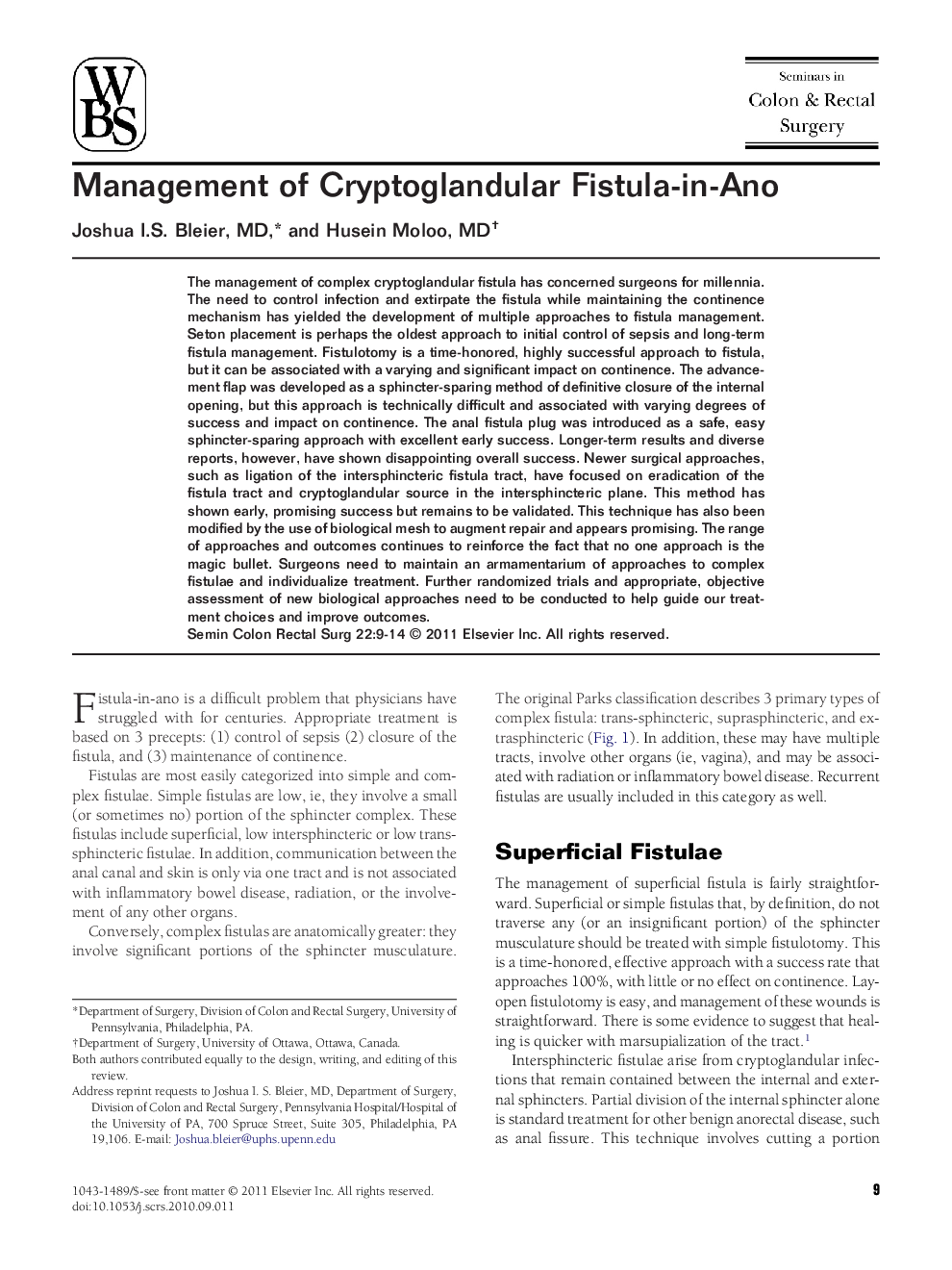| Article ID | Journal | Published Year | Pages | File Type |
|---|---|---|---|---|
| 3319464 | Seminars in Colon and Rectal Surgery | 2011 | 6 Pages |
Abstract
The management of complex cryptoglandular fistula has concerned surgeons for millennia. The need to control infection and extirpate the fistula while maintaining the continence mechanism has yielded the development of multiple approaches to fistula management. Seton placement is perhaps the oldest approach to initial control of sepsis and long-term fistula management. Fistulotomy is a time-honored, highly successful approach to fistula, but it can be associated with a varying and significant impact on continence. The advancement flap was developed as a sphincter-sparing method of definitive closure of the internal opening, but this approach is technically difficult and associated with varying degrees of success and impact on continence. The anal fistula plug was introduced as a safe, easy sphincter-sparing approach with excellent early success. Longer-term results and diverse reports, however, have shown disappointing overall success. Newer surgical approaches, such as ligation of the intersphincteric fistula tract, have focused on eradication of the fistula tract and cryptoglandular source in the intersphincteric plane. This method has shown early, promising success but remains to be validated. This technique has also been modified by the use of biological mesh to augment repair and appears promising. The range of approaches and outcomes continues to reinforce the fact that no one approach is the magic bullet. Surgeons need to maintain an armamentarium of approaches to complex fistulae and individualize treatment. Further randomized trials and appropriate, objective assessment of new biological approaches need to be conducted to help guide our treatment choices and improve outcomes.
Related Topics
Health Sciences
Medicine and Dentistry
Gastroenterology
Authors
Joshua I.S. MD, Husein MD,
